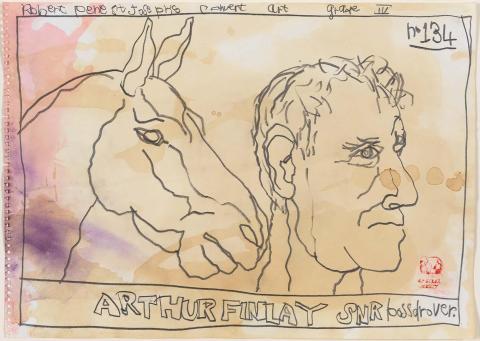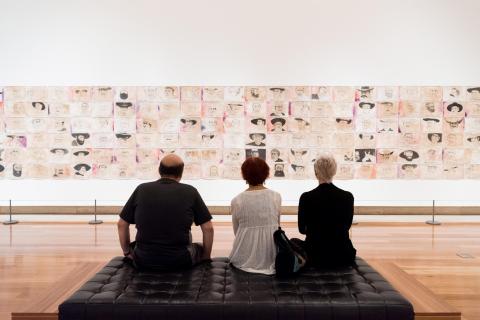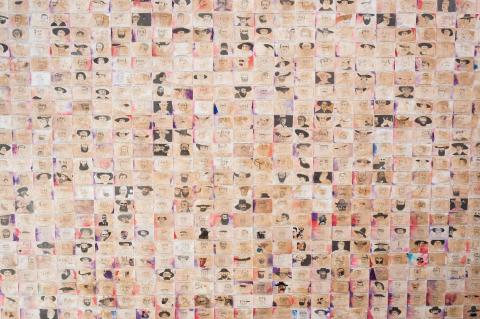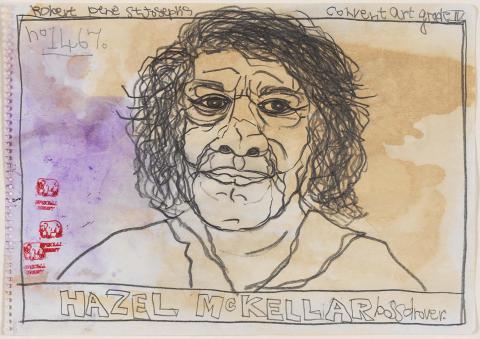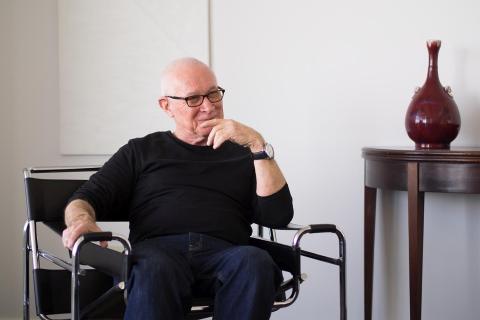Meet the drovers (1)
All images: Robert MacPherson / Australia QLD 1937–2021 / 1000 FROG POEMS: 1000 BOSS DROVERS ("YELLOW LEAF FALLING") FOR H.S. (detail) 1996–2014 / Graphite, ink and stain on paper / Purchased 2014 with funds from the Queensland Art Gallery | Gallery of Modern Art Foundation, Paul and Susan Taylor, and Donald and Christine McDonald / © Estate of Robert MacPherson / Photographs: QAGOMA
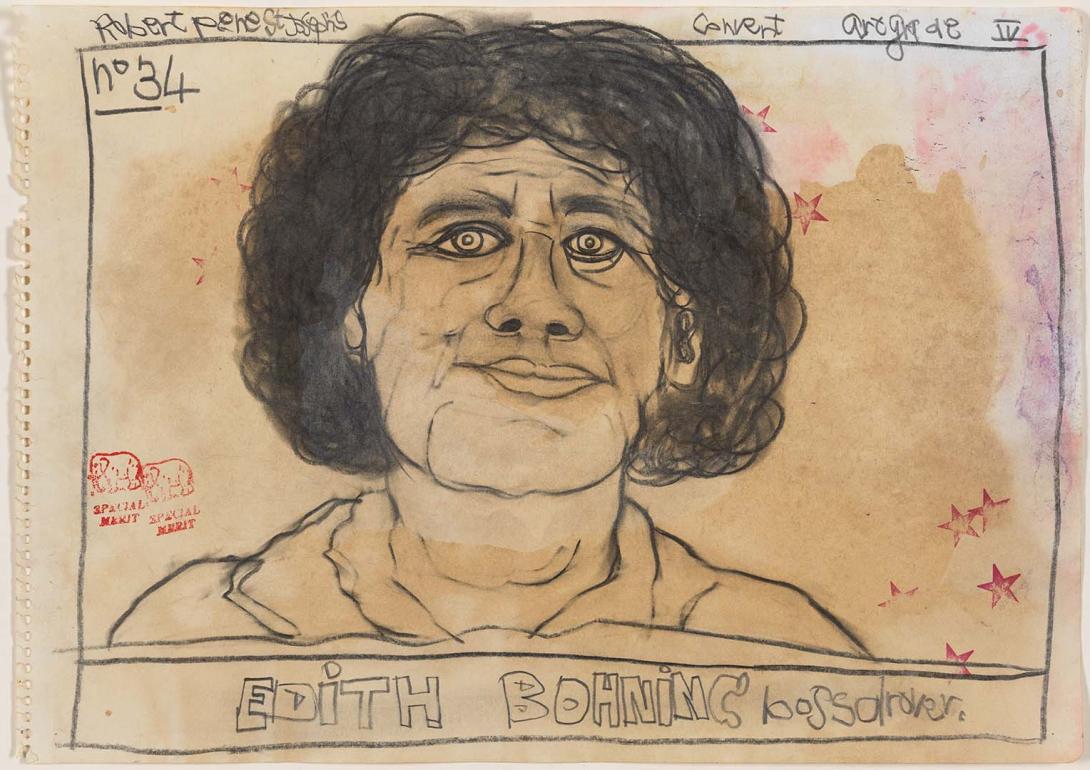
Edith Bohning was born in New South Wales and, following her marriage to John Bohning, she eventually came to live at Helen Springs, near Tennant Creek. Here she learnt to ‘do all the things required of a stockman’.1 The property was geographically remote and, as Tennant Creek township had not yet been established, the station was also socially remote, although there were other women on nearby stations. The Bohnings travelled to civilisation, the nearest railhead, just once a year, to send their cattle to sale. In 1929, Bohning and her daughter Elsie (No. 2263), who wrote in the Northern Territory Times as ‘The Little Bush Maid’ became the first people to take their cattle by train from Alice Springs to Adelaide.2
- ‘The Bohning Story’, Centralian Advocate, 11 January 1952, p.11.
- ‘The Bohning Story’, Centralian Advocate, p.11.
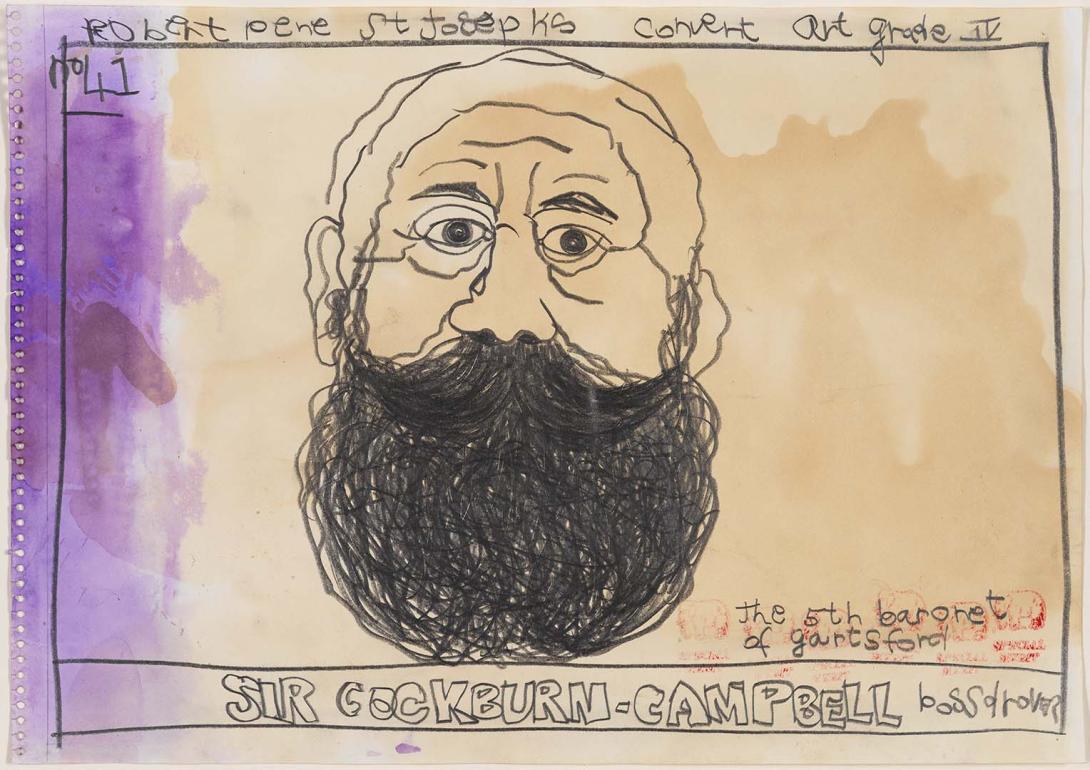
Alexander Thomas Cockburn-Campbell (1870–1935) was born in Albany, Western Australia. He inherited the baronetcy when his father, Sir Thomas Cockburn-Campbell (No. 647), passed away in 1892.
At the age of 20, Cockburn-Campbell went to the north-west of Western Australia.1 He managed a number of operations for Vesteys, a large British pastoral company that owned cattle stations and meatworks in the Northern Territory, Queensland and Western Australia.2 Matt Savage (No. 2146) says ‘we all knew him as Alec and if you called him "Sir Alexander", he would reckon you would be having a shot at him’.3
- ‘Baronet in Old Men’s Home,’ Mirror, 3 September 1932, p.1.
- ‘From The Far North. Lady Cockburn-Campbell’s Story’, Sunday Times, 3 June 1923, p.12.
- Keith Willey and Matt Savage, Boss Drover, Rigby, Adelaide, 1971, p.28.
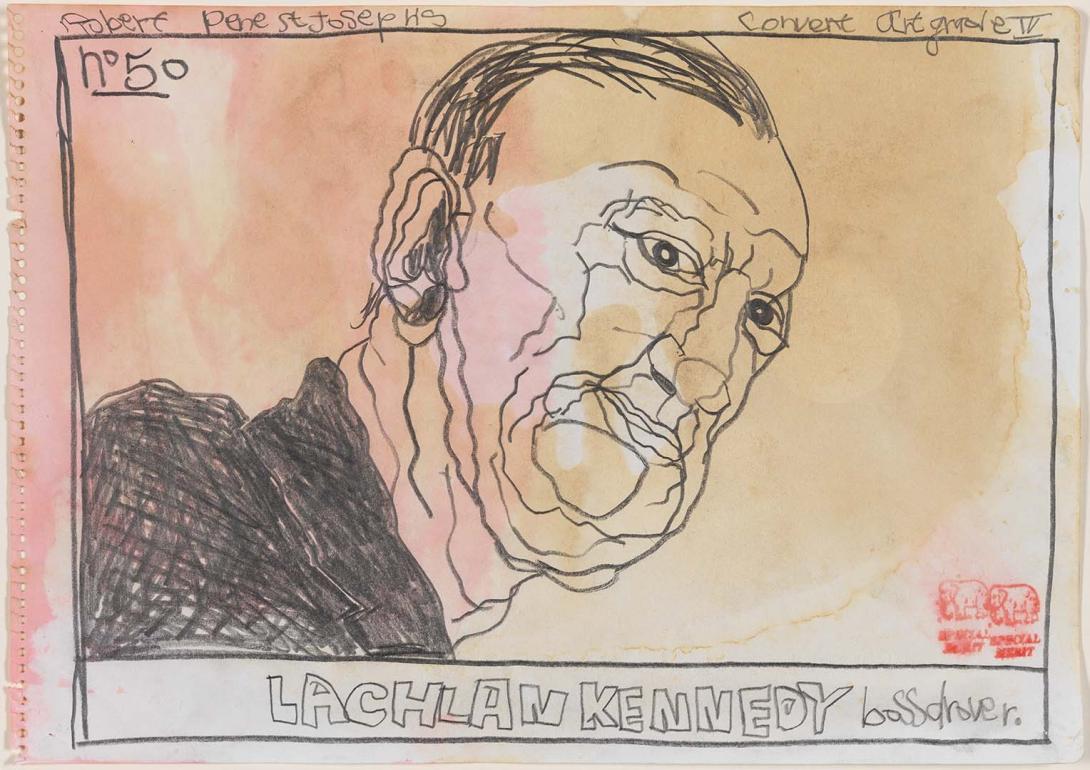
Lachlan Kennedy (c.1838–1913) was born in New South Wales near the Lachlan River. Kennedy was a pioneer of Cape York Peninsula in North Queensland and, with his partner Nicholas Armbrust (No. 647), was one of the first to take cattle to Cape York. Kennedy and Armburst took cattle and horses overland from Brisbane and returned with northern-bred cattle to Brisbane.1
- Lennie Wallace, Cape York Peninsula: a History of Unlauded Heroes 1845–2003, (2nd ed), Brisbane, Boolarong Press, 2012, p.26.
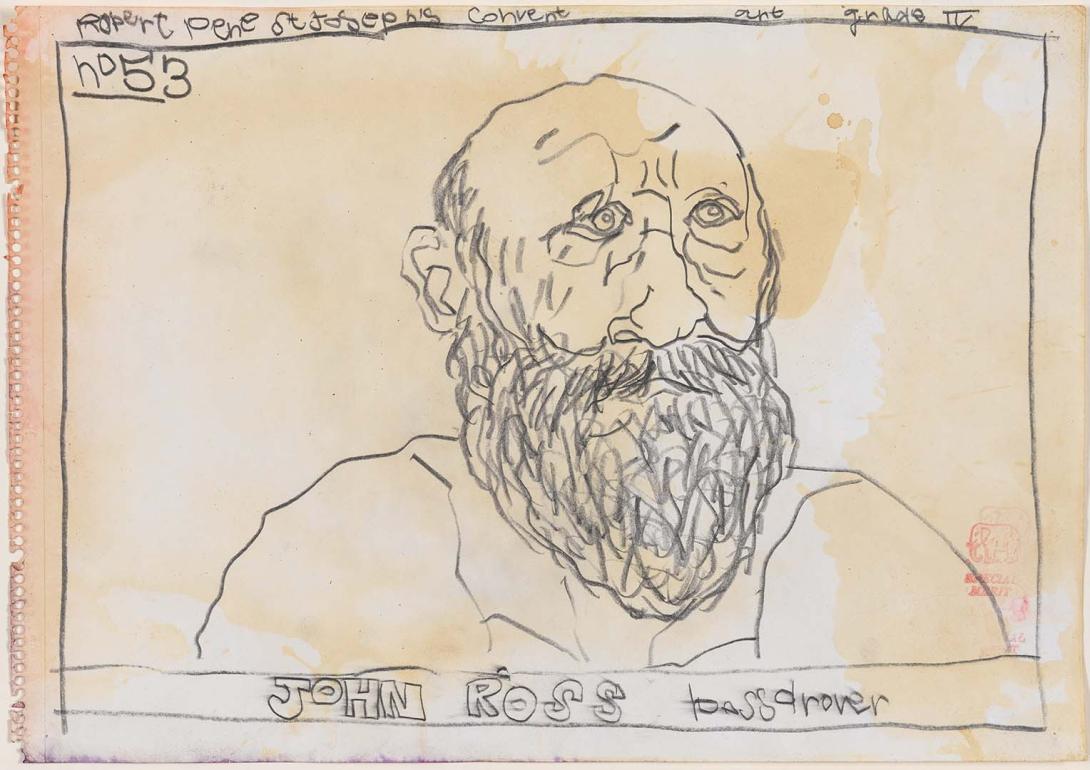
John Ross (1817–1903) was born in Scotland. He came to Sydney in 1837 on the Earl Durham and, after working as a shepherd, joined Charles Bonney in the first drive from the Goulburn River to Adelaide. In the early 1850s, Ross managed stations and he worked for Thomas Elder from 1868–70. In 1869, he took 30 000 sheep from his own station, Umberatana, 300 miles to Macumba. In 1870, he was appointed leader of the advance exploration party for the Overland Telegraph Line, finding a trail with water and enough timber for the telegraph poles. His party of four penetrated the Simpson Desert, discovering the Todd River, the Philipson and Giles Creeks and the Ferguson Ranges, but was unable to find a route. In March 1871, Ross was finally successful in finding a gap between the MacDonnell and Ferguson Ranges at Alice Springs. He continued northwards and met the northern telegraph party near Katherine. Ross arrived in Darwin, completing his third and most successful expedition, while becoming the second person to cross the continent through the centre.1
- GW Symes, 'Ross, John (1817–1903)', Australian Dictionary of Biography, National Centre of Biography, Australian National University, published first in hardcopy 1976, accessed online May 2015.
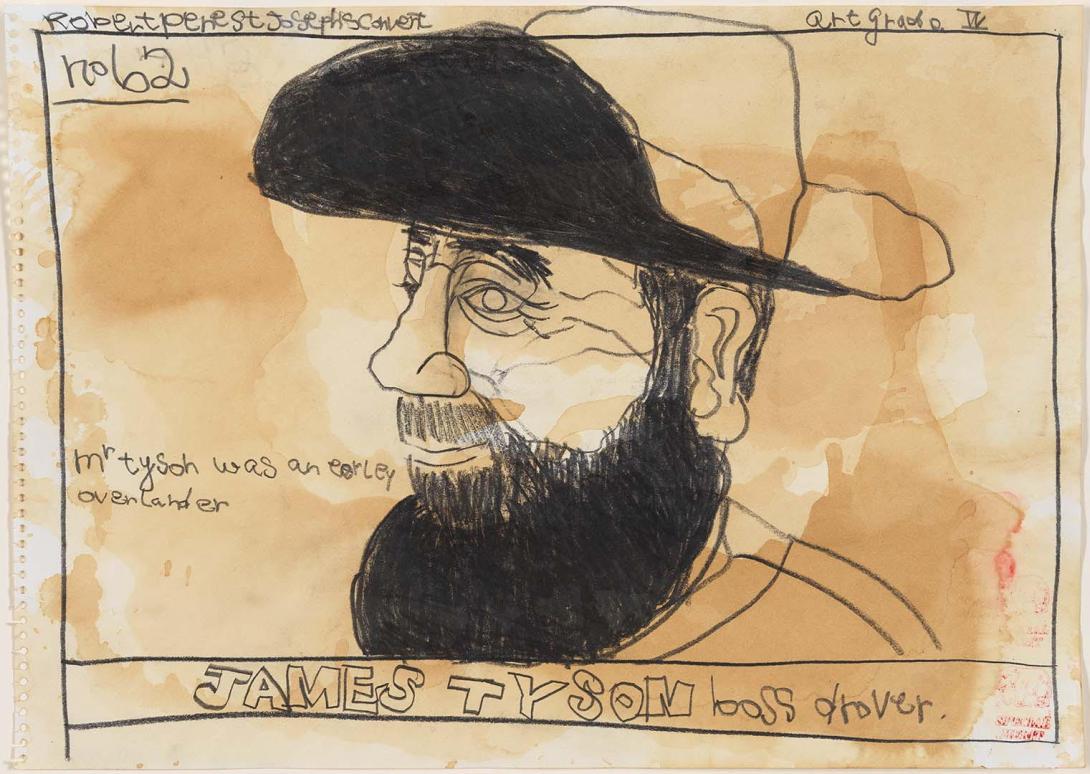
James Tyson (1819–98) was born in 1819 near Narellan, New South Wales. Around 1833, Tyson started work as a farmhand near Appin, later taking up Barwigery (Barwidgee) on the Ovens River. In 1846, with his brothers William (No. 693) and John (No. 1061), Tyson moved to Toorong, a run on the Lachlan River. In 1852, Tyson and William took a small mob of cattle to the Bendigo goldfields where they set up a slaughterhouse and a butcher’s shop. They sold the business after three years to buy sheep stations around Deniliquin.
By 189,8 Tyson had become a substantial land owner; he was a member of the Queensland Legislative Council for five years from 1893–98 and was a magistrate. Tyson’s modest lifestyle and generosity were immortalised by Banjo Paterson in the poem ‘T.Y.S.O.N.’1
- Zita Denholm, 'Tyson, James (1819–1898)', Australian Dictionary of Biography, National Centre of Biography, Australian National University, published first in hardcopy 1976, accessed online April 2015.
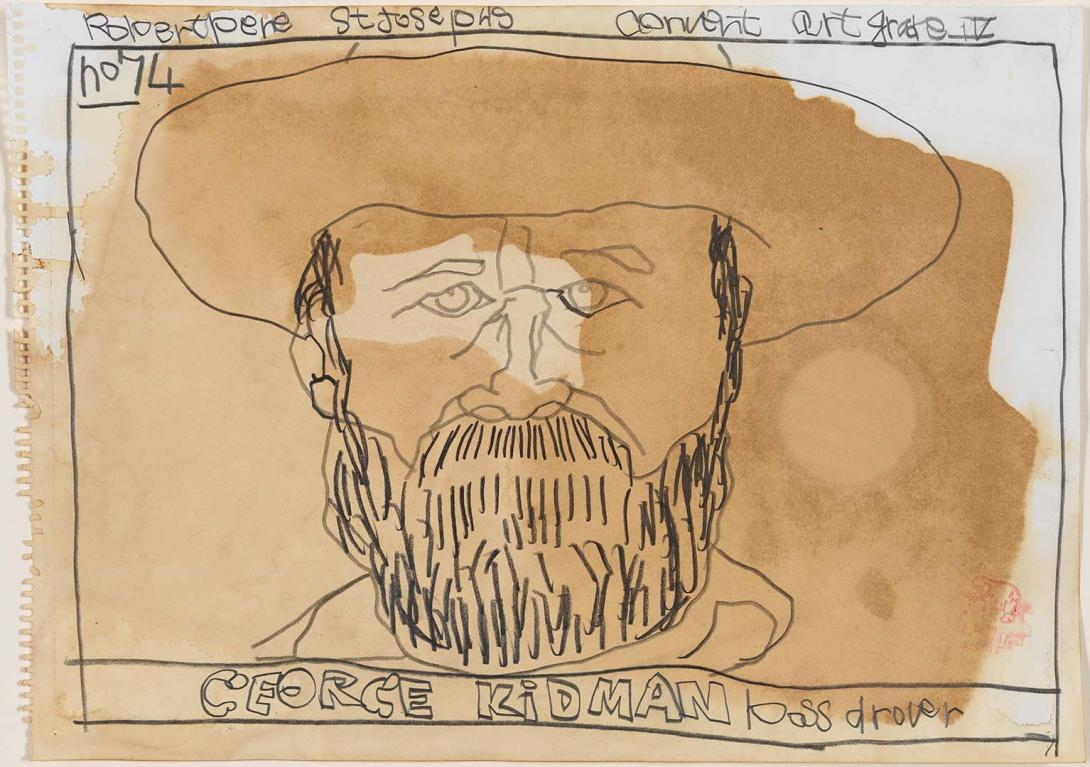
George Kidman (1877–1915) was the eldest son of Thomas Kidman; his uncle was Sidney Kidman, with whom he worked most of his life. Born and raised in the Narracoorte district, Kidman became a stockman, bushman and drover. After working for the family business, Kidman Bros., for a number of years, Kidman married and took over the management of two stations for his uncle Sidney, Wanaaring and Tinapagie (both near Bourke). Kidman died of pneumonia during a drove from Winton in Queensland to the South Australian markets, as part of a joint venture with Sidney Kidman.1
- ‘Sudden Death of Mr. George Kidman’, Narracoorte Herald (South Australia), 26 October 1915, p.3.
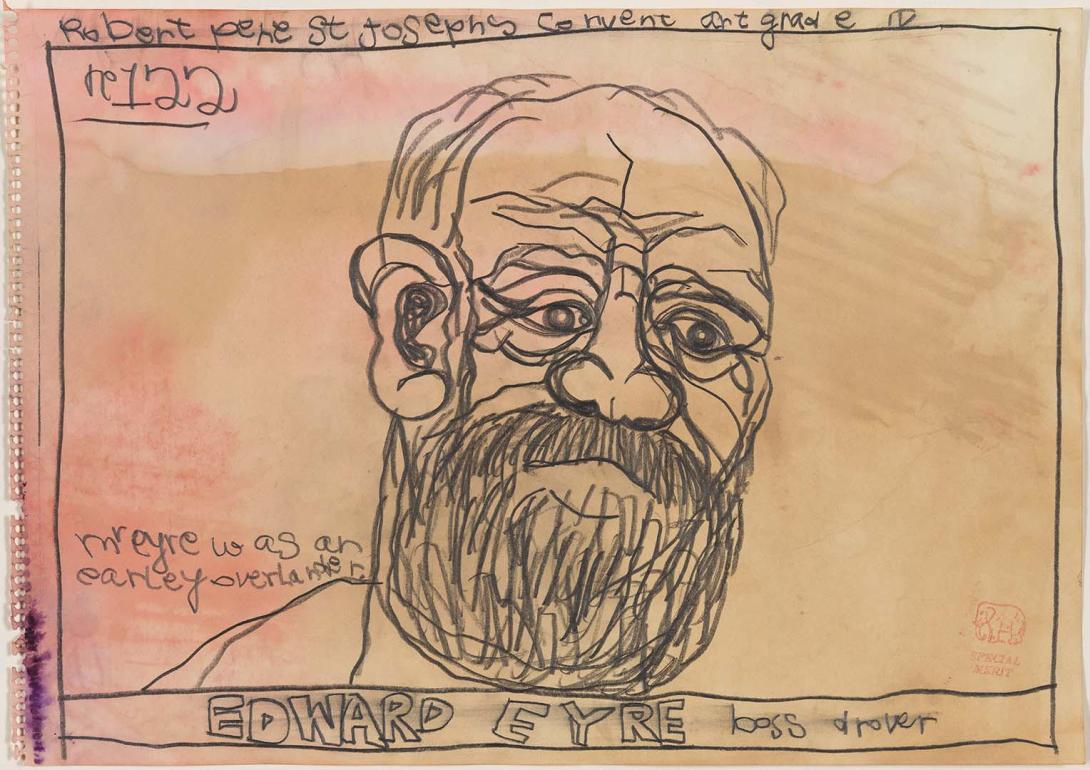
Edward John Eyre (1815–1901) arrived in Sydney in 1833 on the Ellen. After acquiring land on the Molonglo Plains in NSW, he overlanded 3000 sheep there from Liverpool Plains.
In 1837, Eyre met Charles Sturt (No. 719) who became a lifelong friend. Eyre was ‘most anxious to be the first to arrive in South Australia overland from Sydney’ and in 1838 he attempted to find a direct route from Port Phillip to Adelaide. Unable to find water north of the Murray River he returned, then followed Joseph Hawdon (No. 676) to Adelaide.
Eyre was the first European to cross the Nullarbor Plain, following the Great Australian Bight to Albany, Western Australia. Setting out with a large expedition in 1840, they experienced many obstacles and were forced to turn west. Eyre completed the journey and was awarded the founder’s gold medal by the Royal Geographical Society in 1847. Lake Eyre and the Eyre Peninsula in South Australia are named after him.1
- Geoffrey Dutton, 'Eyre, Edward John (1815–1901)', Australian Dictionary of Biography, National Centre of Biography, Australian National University, published first in hardcopy 1966, accessed online May 2015.
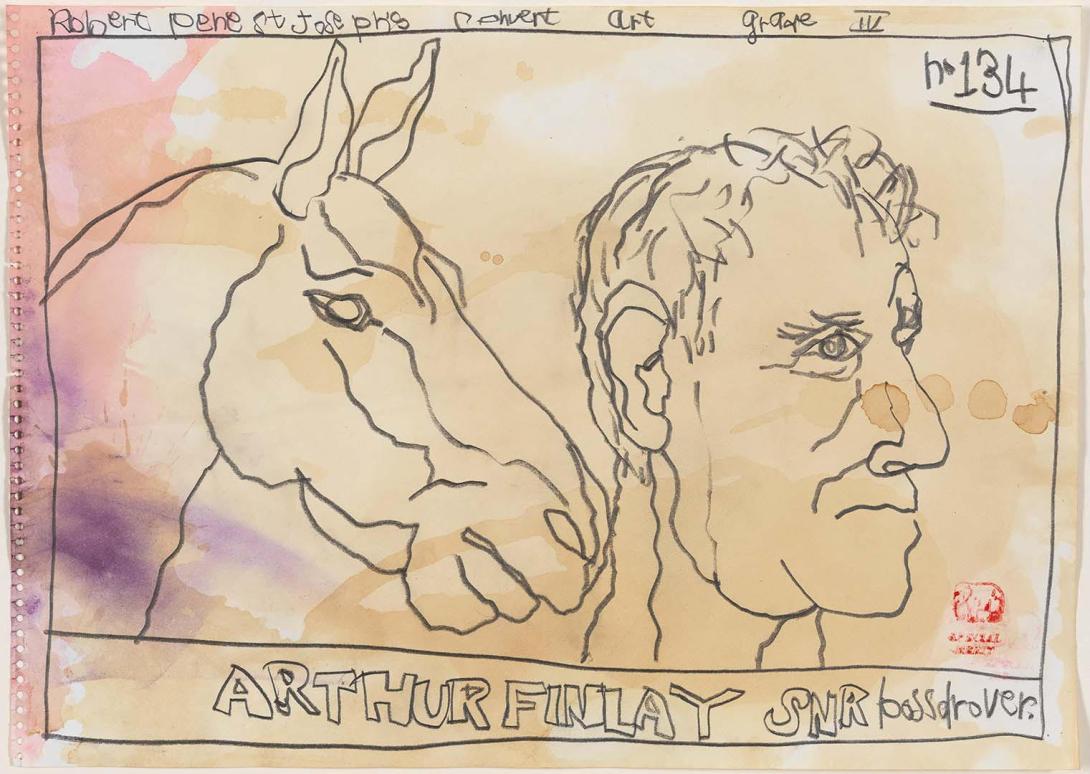
The Finlay family held and managed Norfolk station during the late 1950s. Arthur Henry (Pop) Finlay (Arthur Finlay Snr, No. 134 and ‘Pop’ Finlay, No. 2173) was born in Gordon, South Australia, around 1880. The family moved to Birdsville. Arthur’s brothers Montague (Monty, No. 1315) and Tom (No. 438) worked as stockmen in Queensland and the Northern Territory.
Arthur married Ellen Cronin. They had four sons: ‘Fin’ (No. 2251), George (No. 774), Wray (No. 1216) and Tom (No. 438), who all worked as drovers and stockmen for many years and who saw many changes come about, including the use of helicopters for mustering work. Fin recalls ‘that he learnt a lot about handling cattle from Walangie/Walnangi (Jack) Clark (No. 2319), who used to own “Thorntonia”’.1
- The Drover’s Camp Camooweal, Cattle Pads, ‘Reflections of a Droving Family’s Descendent (Paul Finlay)’, December 2010, viewed May 2015.

Thomas Matthew Ronan (1907–76) was born in Perth and spent his early childhood at Roebuck Plains near Broome.1 Ronan also spent time on Victoria River Downs where his father Jim Ronan (No. 1916) was manager. Ronan went to Christian Brothers College in Perth, leaving school at 14 to accompany his father droving in the north-west of Western Australia.
Ronan inherited from his father a deep love of books and could quote long passages from every book he had read. After his first novel, Strangers and Ophir, was accepted for publication, he took a job as the manager on Newry station in the Territory, just across the Kimberley border, where he began to write in earnest. In 1950, he became the manager of the Commonwealth Agricultural Station at Springvale near Katherine where he finished his novel Vision Splendid.2
- Donald Grant, 'Ronan, Thomas Matthew (Tom) (1907–1976)', Australian Dictionary of Biography, National Centre of Biography, Australian National University, published first in hardcopy 2002, accessed online March 2015.
- Mary Miller Durack, ‘A Writer is Born’, The Western Australian, 8 March 1952, p. 20.

Atticus Tooth (1827–1915) was born in England and came to New South Wales in 1839. After settling on the Hawkesbury River near Camden, in 1846 Tooth and his brother William (861) overlanded a herd from the Murrumbidgee to Wide Bay.
Tooth claims to have been the first man to take cattle from the Murray River, on the Victorian border, to Widgee Widgee in the Wide Bay district. The trip took seven months and, after many losses, Tooth arrived with 600 head of cattle, four horses, six working bullocks and a dray.1 From here, the Tooth brothers acquired more runs in the Wide Bay, Burnett and Darling Downs districts. Constantly travelling, they acquired more stations from the Murrumbidgee and Darling Rivers to the Gulf of Carpentaria.2 In 1856, the brothers separated, with Tooth joining GE Dalrymple’s expedition to Port Curtis in 1859 and then settling near Bowen as a station manager. In April 1862, Tooth left the Darling Downs with the first mob of sheep to travel to Bowen, arriving in July 1863.3
- ‘Time’s Changes’, The Queenslander, October 8, 1910, p.8, accessed April 2015.
- Noeline V Hall, 'Tooth, Atticus (1827–1915)', Australian Dictionary of Biography, National Centre of Biography, Australian National University, published first in hardcopy 1976, accessed April 2015.
- The Queenslander, 8 October 1910, p.8.
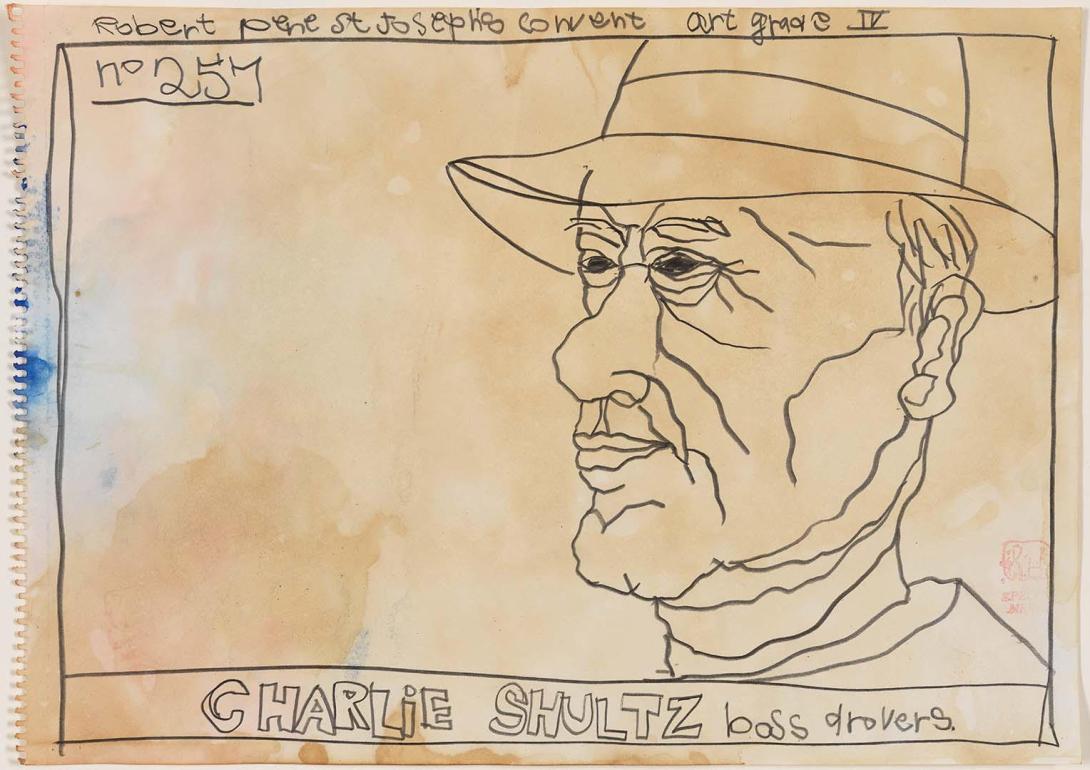
Charlie Schultz (1908–79) was born in Charters Towers. His father worked at Woodhouse station. At 16, Schultz had a job on the SS Janus taking 1400 horses to India. At 19, he became manager of Humbert River station, owned by his father. The station was extremely isolated, accessible only by horseback or on foot and had been allowed to run down. It was 8000 pounds in debt, saddles were falling to pieces, 27 horses needed to be broken in, cattle were unbranded and stockyards needed mending. His father stayed for several months with the view of selling the property, then left Schultz alone to maintain the station. The sale never eventuated and Schultz worked hard clearing the debt and creating a first-class station. Schultz was first in the Northern Territory to transport livestock by truck and the first station owner to initiate airlifts of cattle. Following a serious fall from a horse, Schultz sold Humbert River station in 1970.1
- Charlie Schultz and Darrell Lewis, Beyond the Big Run, University of Queensland Press, St Lucia, Qld, 2002.
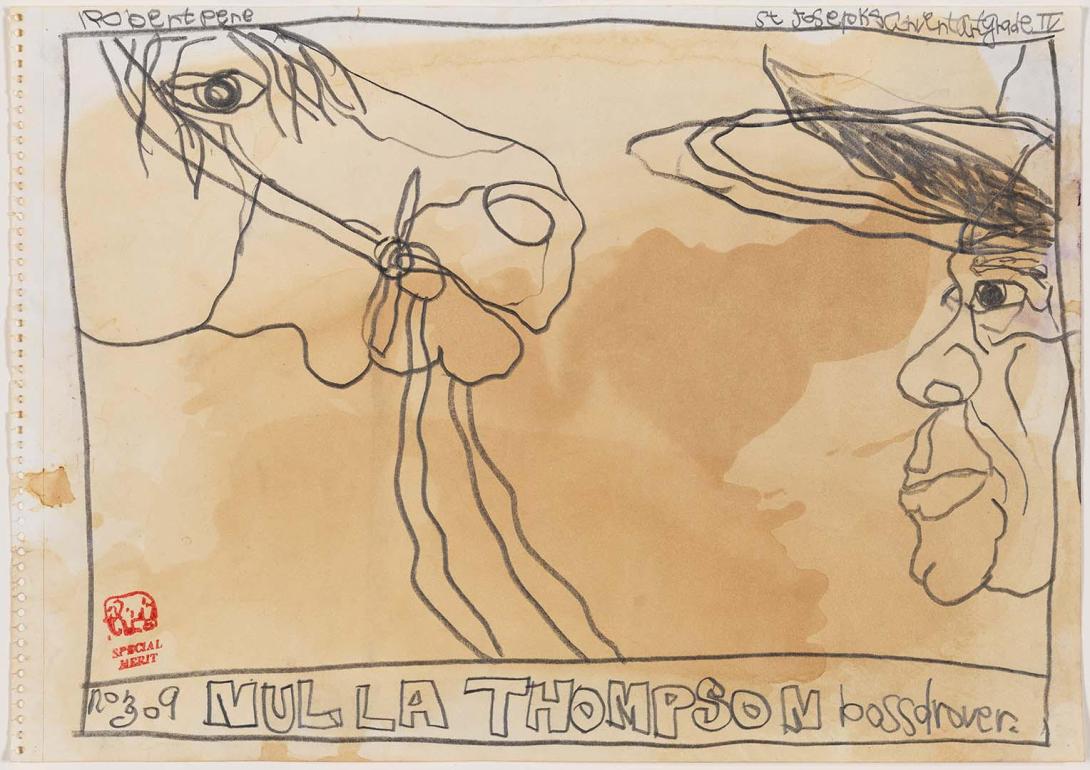
Albert Arthur ‘Nulla’ Thompson was a well-known drover around Meekatharra, Western Australia in the 1920s. Thompson was badly injured in an accident with a camel, but continued to be ‘a stockman . . . as good as any and better than most’.1
An anonymous drover tells a story about one night during a muster when the bullocks took flight and the boss drover rounded them up. Thompson, an apprentice at the time, went out to help bring the bullocks back into the mob, but the cattle startled and the stockmen gave chase till daylight. The story goes that Thompson had been with the leaders, most of the time bareback. He was skinned from the ankles up through hanging on, but he still had the cattle. Thompson was a boss drover of notable bravery and was ‘not the sort to get a swelled head, the sort of fellow who took care of his elderly parents and always gave a hand or a meal when needed’.2
- ‘Pioneer Drovers’, Northern Territory Times and Gazette, 28 January 1927, accessed November 2014.
- Another Drover, Meekatharra, ‘Riders and Drovers’, Western Mail, 31 December 1936, p.12, accessed 27 November.

Ruby de Satge (c.1920–unknown) was born ‘on the banks of the Georgina River’, in the Urandangi. She was the granddaughter of Englishman Oscar de Satge (672). When Oscar de Satge returned to England, Carandotta station could not be passed on to his children under the Queensland Aborigines Act, but was sold and at a later stage taken over by Sir Sidney Kidman.1
Ruby de Satge learnt ‘the art of droving’ from her father.2 In her early twenties, De Satge was employed and then adopted by the Sowden family, droving cattle with them for many years. She witnessed the exploitation and neglect of Aboriginal people; her own mother Janie had been taken from her mother as child and raised by others. De Satge was a pioneer of winning ‘a fair wage for a fair day’s work’, and bought her first union ticket in 1943 — it cost ten bob (ten shillings).3 De Satge was a tough and resourceful woman, often enduring injuries on the road, building fences by hand from scratch, lamb-marking, mustering sheep for shearing and mustering wild cattle.4
- Bill Rosser, and Australian Institute of Aboriginal Studies, Dreamtime Nightmares: Biographies of Aborigines under the Queensland Aborigines Act, Australian Institute of Aboriginal Studies, Canberra, 1985. p.11.
- Rosser, p.11.
- Herb Wharton and Herb Wharton, Cattle Camp: Murrie Drovers and their Stories, University of Queensland Press, St Lucia, 1994.
- Wharton, 1994.

Thomas James Cusack (1932–2012) was born in Brisbane and left school at 14 to work on a dairy. In 1950 Tommy was employed as a station hand on Diamantina station in Winton. His first drove was taking 700 bullocks from Glenormiston on the Georgina River to Winton, a trip that took two months. Cusack continued droving to Coorabulka station, Cathedral station, Woodstock station and all around Winton. In 1958, Cusack droved 2000 bullocks from Bull Creek station, Cloncurry, to Innamincka. Leaving a horse trailer with the droving plant (pack horses, dogs, the cook, supplies and cooking equipment), Cusack and four other drovers went across Sturt’s Stony Desert, a three-day trip to Goyders Lagoon, on the Diamantina River. In 1963, Cusack worked contract mustering and droving at Skelton Outstation and Frome Downs, South Australia.1
- ‘Thomas James CUSACK, b. 13th September 1932, Brisbane QLD; USH00568’, Australian Stockman's Hall of Fame and Outback Heritage Centre, accessed May 2015.

Eldest of the Kidman brothers, Sackville Kidman (1855–99) moved to Broken Hill in the days before it became a wealthy mining town, to manage Sturt’s Meadows station. Kidman then started a butchering business in Silverton and a successful stock dealership. Kidman took up land in Queensland at Bancannia and Black Hill where he raised stock, driving them to markets in Sydney, Adelaide and Melbourne. He became one of the best-known men of the stock routes. Sackville was also ‘spoken of as a straightforward business man’ and his contribution to the Kidman Bros. Company saw it grow from strength to strength as he established and enhanced the livestock trade into Western Australia.1
- ‘Death of Mr Sackville Kidman’, Barrier Miner (Broken Hill), 11 March 1899, p.2.

John Mackay (1839–1914) was born in Inverness, Scotland, and came to Melbourne with his parents on the Australia in 1854. His father took up Ness farm, between Armidale and Uralla in NSW. Mackay later travelled to the South Pacific and, in 1859, he joined the gold rush on the Rocky River near Armidale. When his claim was nearly finished, Mackay was persuaded to lead an expedition north in search of grazing lands. His party left Armidale in January 1860, reaching Rockhampton on 2 March before turning east, between the Burdekin and the watershed of the Isaacs River; the area became known as the Mackay District. Mackay’s connection with the area was brief; he tendered for the lease of Greenmount in 1861 but sold in 1863 because of his partner’s insolvency.1
- JA Nilsson, 'Mackay, John (1839–1914)', Australian Dictionary of Biography, National Centre of Biography, Australian National University, published first in hardcopy 1974, accessed online April 2015

Maggie Sautelle Lilly (1912–2005) was born at Derby, Western Australia, and attended the Institute at Wyndham until she was 14. Lilly assisted her mother running a store and a boarding house; she rode the local postmaster’s bay horse and raced the local girls at the Darwin racecourse.
Lilly married Edwin James ‘Sam’ Lilly (102) in 1935. She recalls: 'We spent the first years of our marriage . . . battling away out in the bush with swags to sleep on, no beds, only damper and beef to eat. No fridges in our time'.1 In 1945, they bought Greenvale station (600 000 acres or 242 800 hectares) then acquired Ada Vale station, which once belonged to the Duracks. These two properties became known as Bow River station or 'The Bow' and had over a million acres.2 After her children were born, Lilly would include them in fence checking, pulling bores, tending cattle and branding. When the children went to school, Lilly would help with the muster. She was an exceptional horsewoman, who won many races.3
- Annie Marie Ingham, Pioneers of the Kimberley: The Maggie Lilly Story, Halstead Press, Rush Cutters Bay, 2000, p.87.
- Ingham, p.88.
- Margaret Lilly, interview with Ursula Brimble, Kununurra, 29 May 1986, State Library of Western Australia, accessed March 2015.

Thomas Cockburn-Campbell (1845–1892) was born in Exeter, England. He was educated in Heidelberg, Germany, and travelled the Continent before migrating to Queensland when he was 19.1 Cockburn-Campbell was first employed in Queensland as a chainman (surveyor’s assistant) with explorers and land surveyors the Gregory Brothers, followed by work with contract surveyors. In the late 1860s, he travelled to Western Australia to farm at Langton Park near Mt Barker.
Following the death of his elder brother in 1871, Cockburn-Campbell became a baronet. Cockburn-Campbell was nominated to the upper house of the WA Parliament and later he won the seat of Plantagenet. Cockburn-Campbell was a strong advocate for self-government and became a frequent contributor to the Western Australian Times.2 In 1879, he took up a nominal half share in the Western Australian Times, moving to Perth and giving up his pastoral interests. Appointed to the Legislative Council in 1890, Cockburn-Campbell relinquished journalism for politics.
- OK Battye, 'Cockburn-Campbell, Sir Thomas (1845–1892)', Australian Dictionary of Biography, National Centre of Biography, Australian National University, published first in hardcopy 1969, accessed online March 2015.
- ‘Obituary Notice, Sir Thomas Cockburn Campbell’, The West Australian, 29 September 1892, p.2.

John Costello (1838–1923) was born in Yass, New South Wales. His father, Michael Costello, was a storekeeper and grazier. In 1863, Costello led a party from Goulburn to south-west Queensland.1 His first station, which he called Burtna, was on the Mobel Creek, a tributary of the Bulloo, Queensland.2 Costello and Patrick (Patsy) Durack (No. 925) together speculated on large tracts of land.
Costello is reputed to have assisted in the apprehension of Harry Readford (Captian3 Starlight, No. 2400). Noticing from tracks that a large mob had travelled the valley of Cooper’s Creek, he informed the police and it was discovered that a draft of cattle had been taken from the back of Bowen Downs.
In 1877 Costello bought Cawarral, a racing stud near Rockhampton and Annandale Station on the Mulligan River, later moving to Lake Nash, a property straddling the Queensland — Northern Territory border. After a number of difficulties and the Depression of 1890, Costello managed to buy his original farm at Grabben Gullen, eventually settling at Tocabil, in New South Wales.4
- Sally O'Neill, 'Costello, John (1838–1923)', Australian Dictionary of Biography, National Centre of Biography, Australian National University, published first in hardcopy 1969, accessed online May 2015.
- The Queenslander, October 2, 1930, p.7
- Robert Pene’s spelling.
- O’Neill, Australian Dictionary of Biography.

Francis Lascelles Jardine (1841–1919) was born in Orange, NSW, and educated at The King's School. Frank was the eldest son of John (No. 1356) and Jane Jardine and the brother of Alexander William Jardine (No. 94) born in 1843.
Frank and Alexander overlanded stock for Cape York, leaving from Rockhampton on 14 May 1864 with a party of four Europeans, four Aboriginal people, 42 horses and 250 cattle. They arrived ten months later, after a journey over 1199 miles (1931km) with many delays caused by taking the wrong routes along some rivers. Frank and Alexander were subsequently elected fellows of the Royal Geographical Society of London. Frank settled near Somerset in North Queensland and in 1884–86 was in charge of transport for the construction of the Cape York telegraph line.1
- Clem Lack, 'Jardine, Francis Lascelles (Frank) (1841–1919)', Australian Dictionary of Biography, National Centre of Biography, Australian National University, published first in hardcopy 1972, accessed May 2015.

Nicholas Armbrust (1844–1916) emigrated from Denmark, bringing the sword and bayonet he used in the Austro–Prussian war — they became his most prized possessions.1 Armbrust was one of the earliest European settlers in Cape York Peninsula, having worked his way north to the Palmer River, south-west of Cooktown. He became a competent bushman and horseman, overlanding cattle to the Palmer River goldminers, working with Lachlan Kennedy (50).2
Armbrust married Rebecca Harris in 1876 at Cooktown, where their son Archie was born. Armbrust’s wife and newborn son rode with him on his next trip to take cattle to the outpost of Coen. The family was attacked, their horses speared and large quantities of their food supplies stolen. The Armbrusts later became hotel proprietors in Laura and Cooktown.
- Obituary ‘Mrs. Rebecca Armbrust’, Cairns Post. 12 August 1930, p.12.
- Obituary ‘Mrs Rebecca Armbrust’, The Northern Herald, p.28.

Joseph Hawdon (1813–71) was born in Durham, England and arrived in Australia in 1843. He stayed with his brother John (No. 772) and family at the Cowpastures, a rented property at Ellerslie.
In 1836, Hawdon took 300 cattle from the Murrumbidgee River to Melbourne, a distance of about 298 miles (480km), an event now recorded as the first drove over a significant distance. His next trek was recorded in his diary, published in 1952 as The Journal of a Journey from New South Wales to Adelaide [the capital of South Australia] performed in 1838 / by Mr Joseph Hawdon.
Hawdon engaged in other pioneering activities, notably as part of the first overland mail service between Melbourne and Sydney. He lived in Dandenong, Adelaide and Melbourne before eventually settling in Christchurch, New Zealand.1 There is a Lake Hawdon named for him in both Australia and New Zealand.2
- Alan Gross, 'Hawdon, Joseph (1813–1871)', Australian Dictionary of Biography, National Centre of Biography, Australian National University, published first in hardcopy 1966, accessed online July 2015.
- Gross, Australian Dictionary of Biography.

Alexander Fullerton Mollison (1805–85) was born in London. After living in Jamaica and New York, Mollison arrived in New South Wales in 1834 where he found work as a surveyor. He obtained the rights to a pastoral run at Uriarra on the Murrumbidgee River. In 1837 Mollison set off to find another pastoral run, taking two overseers, 49 servants, 5000 sheep, 634 cattle, 28 bullocks and 22 horses.1 After travelling for over seven months Mollison settled on Colliban, a pastoral leasehold near present-day Malmsbury (Victoria). Mollison made only one overland journey, but kept a detailed journal which his sister presented to the State Library of Victoria in 1886.2
- Gael Thomsen, 'Mollison, Alexander Fullerton (1805–1885)', Australian Dictionary of Biography, National Centre of Biography, Australian National University, published first in hardcopy 1967, accessed online April 2015.
- Evan McHugh, The Drovers: Stories Behind the Heroes of our Stock Routes, Penguin Group, Australia, 2010, pp. 444.

Charles Sturt (1795–1869) was born in India and schooled in England. Joining the British army, Sturt served in the Peninsula wars, in Canada fighting against the Americans, then in Europe. Promoted to Captain in 1825, Sturt embarked with his regiment to take convicts to New South Wales. Sturt arrived in Sydney in 1827, where he was appointed military secretary to the governor Sir Ralph Darling.
Keen to explore, Sturt sought approval to follow the course of the Macquarie River and set out in December 1828. On 2 February, he came across a river which he named the Darling. Sturt’s second expedition left Sydney in 1829 to explore the Lachlan–Murrumbidgee system discovered by John Oxley. On this expedition, Sturt named the Murray River. Sturt continued exploring, looking for connections between the river systems and to map the inland terrain.1
- HJ Gibbney, 'Sturt, Charles (1795–1869)', Australian Dictionary of Biography, National Centre of Biography, Australian National University, published first in hardcopy 1967, accessed online July 2015
